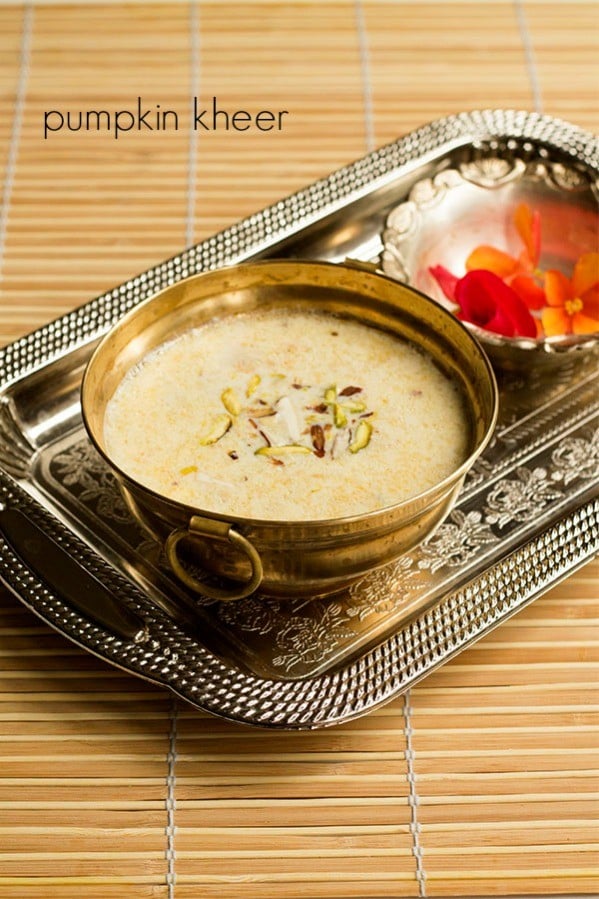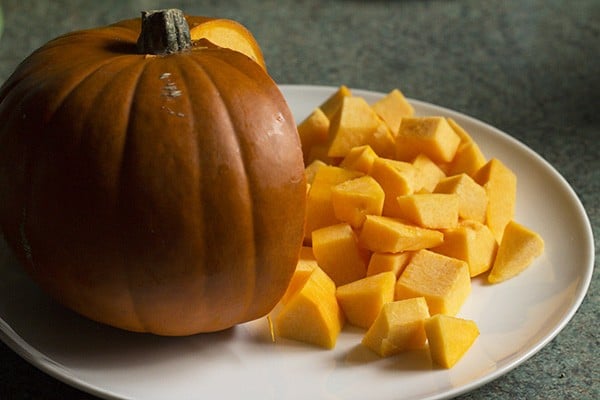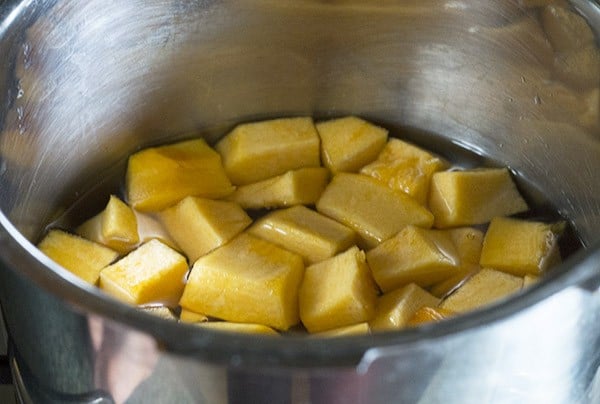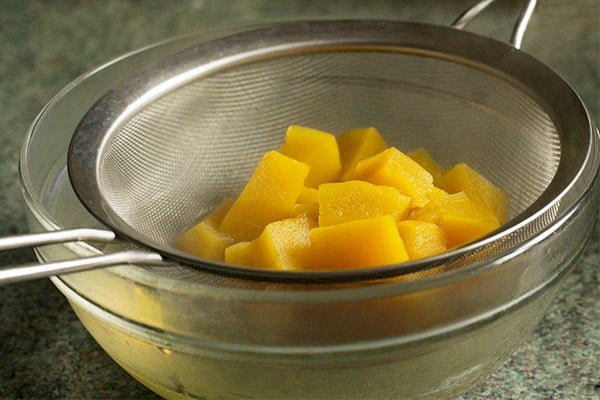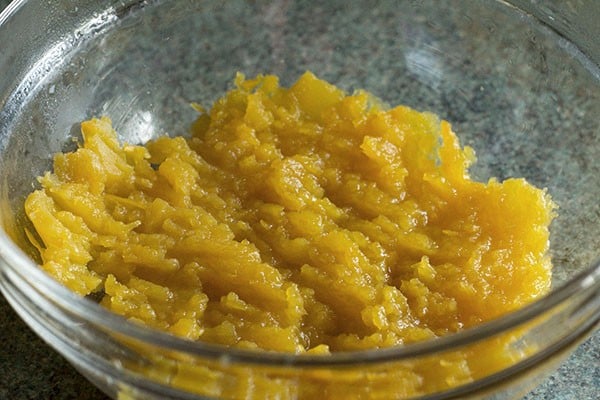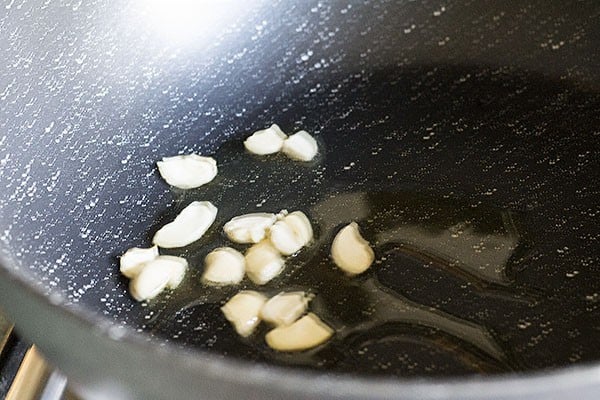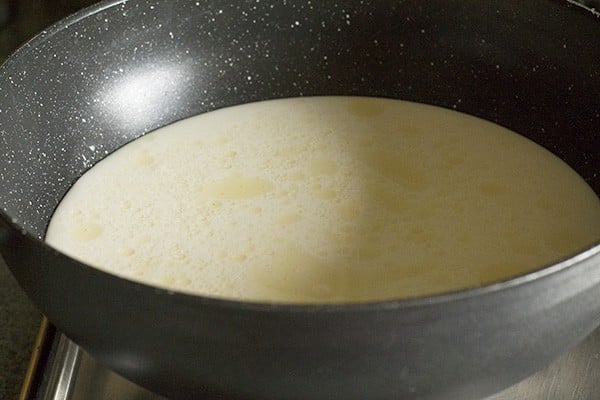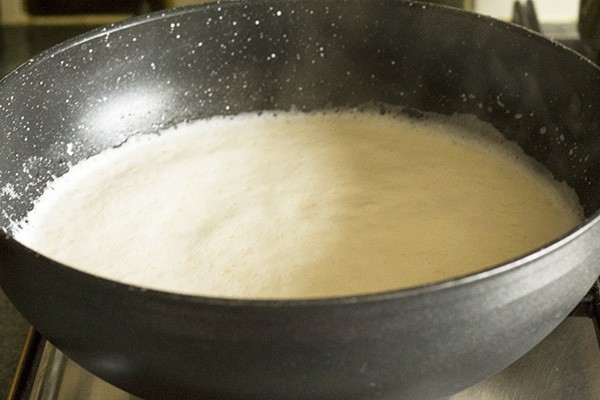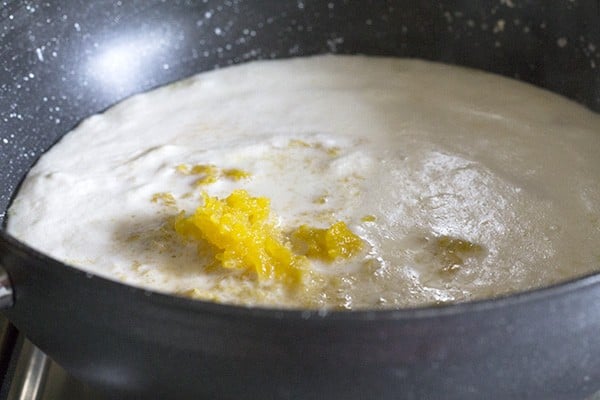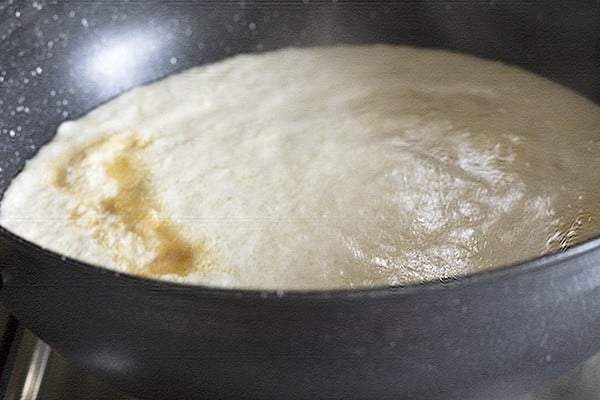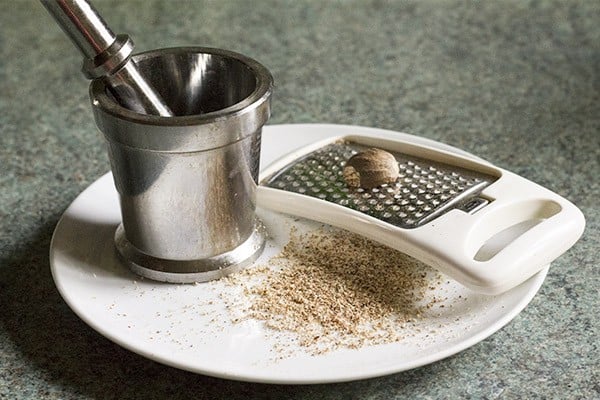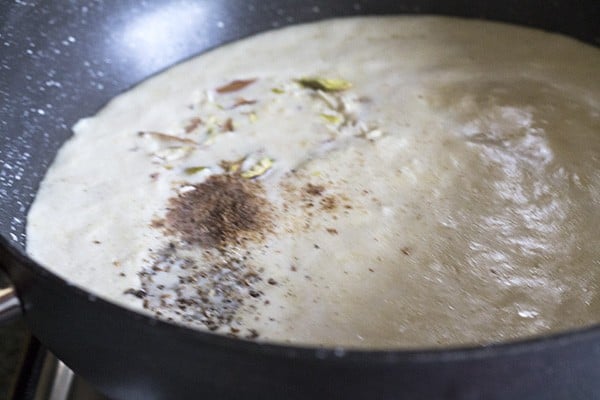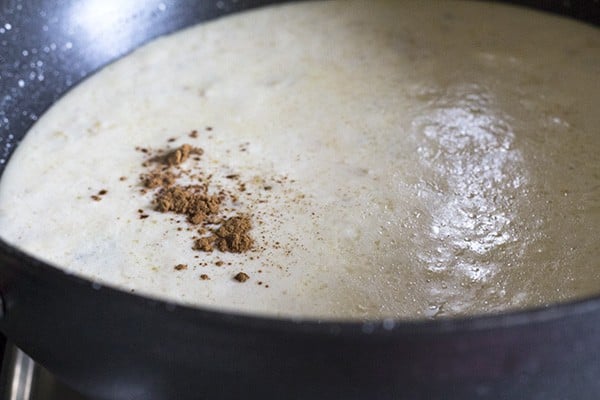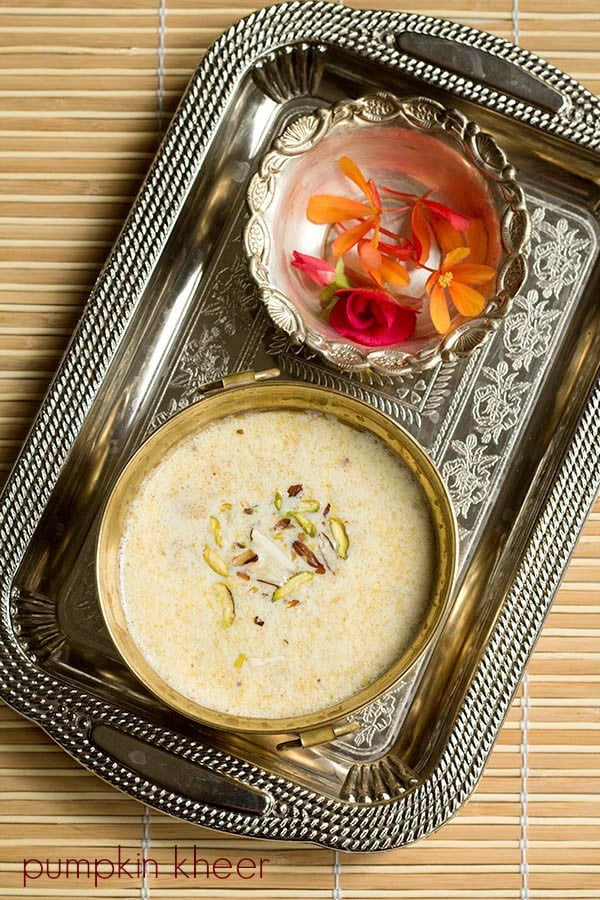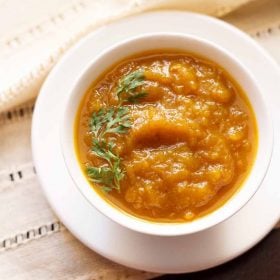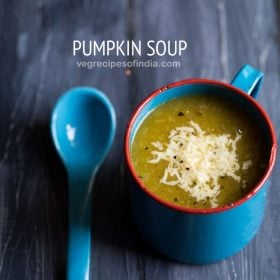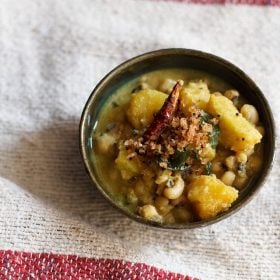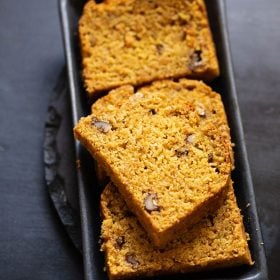A Note About Navratri
It’s Navratri, which literally translates to “nine nights” in Sanskrit. These nine nights are spent worshipping the goddess Durga and her Shakti (feminine power), with each of her nine forms being celebrated over the course of the festival. When the Sharad Navratri is in full swing during the festival, many people all over India are embracing the spiritual purification of mind, body, and soul via various disciplined practices with respect to food, behavior, and thinking. The food practices followed during this phase vary a bit in different regions of India. Certain grains, vegetables, and spices are avoided during Navaratri Fast, and there is a clear seasonal effect to this practice. Abundant seasonal vegetables are highly sought after, benefiting not only the consumer but also the farmers who grow them. Fresh and seasonal produce is like nectar to the body. One such vegetable is pumpkin.
About Kaddu ki Kheer Recipe
In this Kaddu ki Kheer recipe, I cooked and mashed the pumpkin and used it for the kheer. Another way of preparing the kheer would be using grated pumpkin, which I describe how to do in the recipe card notes.
Practically speaking, grating the tough pumpkin is difficult. I prefer preparing the kheer using the cooked pumpkin purée, but you are welcome to use whichever method works best for you.
Another reason I love this recipe is that it is naturally grain-free, gluten-free, soy-free, egg-free, and is easy to make vegan. No matter what diet you’re on, this is a recipe that you can enjoy!
This delicious recipe is super easy to prepare and requires minimal ingredients. The whole process, including the cooking time for the pumpkin, takes just 40 minutes. That means it is easy enough to prepare even on a busy weeknight.
I invite you to try my pumpkin kheer or pumpkin payasam recipe this Navratri season. Offer a bowl to the Goddess and seek her blessings. And make sure to save some to enjoy with your family, too!
Ingredients & Substitutions
Pumpkin – I generally make my own Pumpkin Puree as described in the recipe steps below, but you are welcome to use canned pumpkin purée (NOT pumpkin pie filling) if you prefer to take a shortcut! This recipe will also work with any kind of winter squash (including acorn squash or butternut squash), or even sweet potatoes. Milk – I used regular dairy milk, but you are welcome to swap in your favorite plant-based milk to make this a completely vegan pumpkin payasam recipe. Sugar – I used unrefined raw sugar, but you can use regular granulated white sugar, grated jaggery, or brown sugar if you prefer. If you use jaggery, make sure to wait to add it until the very end as it can curdle the milk. Almonds & Pistachios – These are traditional nuts for the kheer. Cashews – Optional, but rich, creamy, and delicious. Ghee – Optional, for richness. You can also use a neutral-flavored oil to make it vegan. Cardamom Powder, Grated Nutmeg & Ground Cinnamon Powder – These warming spices are lovely in my pumpkin kheer. Feel free to swap in an equal amount of pumpkin pie spice or apple pie spice instead.
How to make Kaddu ki Kheer
This simple pumpkin kheer recipe comes together with very little fuss. Here’s how it’s made:
Preparation
- Peel and chop the pumpkin to roughly 1 inch pieces. Take two cups of such pieces (roughly 220 grams). Discard the stringy inner portion, but consider saving the pumpkin seeds; you can wash and dry them and use as a a snack or as additions to other recipes!
- Cook the pumpkin pieces in a pressure cooker with 3 cups of water. Turn off the heat after 2 whistles. Allow the pressure to release naturally. Alternatively, you can also cook the pumpkin in an open pan — to do this, simmer it in a pot of water until soft. While the pumpkin is cooking, you can slice the nuts, powder the green cardamoms, and grate the nutmeg and keep them aside for later.
- Strain the cooked pumpkin and discard the water (or use it to make dals, in curries, soups or for kneading roti or paratha dough).
- Now, mash the cooked pumpkin pieces using a fork or potato masher.
- Roughly chop the cashew nuts. Then, in a thick bottomed, deep pan, add a teaspoon of ghee or oil. Fry the broken cashew nuts until golden brown. Take them out of the pan and keep them aside until needed. This step is optional. Instead, you can add finely sliced nuts after the kheer is fully cooked.
Make Pumpkin Kheer
- In the same pan, add 3 cups of milk (use non-dairy, plant-based milk for a vegan version). Bring it to a boil by heating it. Note: For almond milk, just let it become warm and don’t bring it to a boil.
- Once the milk comes to a boil, simmer and keep stirring it every so often and making sure to scrape along the bottom of the pan with your spoon. This is to avoid the milk browning at the base. Continue cooking the milk this way for 5 minutes. Keep clearing the sides and the base as it cooks. Keep the heat low enough to allow it to boil but not spill over.
- After 5 minutes, add the cooked, mashed pumpkin purée. Mix well. Mash lumps of pumpkin if any. Bring this to a boil.
- Next add 3 to 4 tablespoons of raw sugar or white sugar. Again stir to allow the sugar to dissolve and get mixed in. This will take about 1 to 2 minutes.
- As the sugar dissolves, if not done already, powder the cardamom, grate the nutmeg, and slice the almonds and pistachios. Keep these ready.
- Add ½ teaspoon of green cardamom powder, ½ teaspoon of grated or ground nutmeg, half the quantity of sliced pistachios & almonds. Then mix and turn off the heat.
- If you wish, you can add ¼ to ½ teaspoon of ground cinnamon (cinnamon powder) also. Add and mix well.
- Offer the Kaddu ki Kheer or Pumpkin Payasam garnished with the remaining sliced nuts to the Goddess and/or share with your family. Enjoy!
The Benefits of Pumpkin
Did you know that a cup of cooked, mashed pumpkin provides more than 200% of daily required vitamin A for someone on a normal diet? Or that vitamin A is needed for better eyesight in dim light? A fiber-rich vegetable, pumpkin can also keep you fuller for longer with fewer calories ingested. A cup of cooked, mashed pumpkin also provides more potassium than a banana, a necessary nutrient for our muscles and balancing our blood pressure. As you can see, there are many reasons to include pumpkin in our diet. Of course, always follow a doctor’s/nutritionist’s advice if you are considering making any changes to your advised diet. Pumpkins can be seen everywhere in the market at the moment, at their best quality and best price. The beautiful-looking pile of sweet pumpkins piled up in a stack beckoned me at the store. I simply had to get my hands on them and make the most of them. The first thought that occurred to me was Kaddu ki Kheer. Please be sure to rate the recipe in the recipe card or leave a comment below if you have made it. For more vegetarian inspirations, Sign Up for my emails or follow me on Instagram, Youtube, Facebook, Pinterest or Twitter. Kaddu ki Sabji | Easy Pumpkin Recipe Pumpkin Soup Recipe (Easy One-Pot Soup) Mathanga Erissery | Pumpkin Erissery Recipe Eggless Pumpkin Bread Recipe This Kaddu ki Kheer recipe from the blog archives first published on October 2015 has been updated and republished on October 2023.
